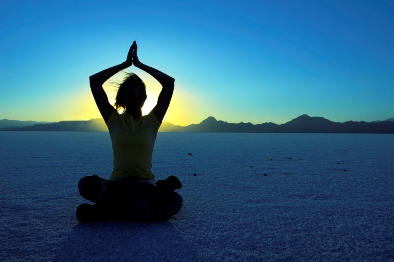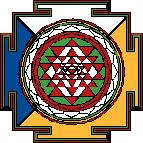|
What is Yoga? Find Out about India’s Ancient Science of Self-Transformation
Yoga has become hugely popular in the West in the past decade. Yet how many of us really understand or can answer the question “what is yoga?" Yoga is a science of self-transformation developed in India more than 5000 years ago. It is not known precisely when yoga was first introduced to humanity as there are no accurate records to show this. The Yoga Sutras of Patanjali, written around 1600 BC are perhaps the first and most well-known written transmission of the science of yoga. However, intellectual explorations into human consciousness were also conveyed in earlier Indian texts such as the Puranas, Vedas, and the Upanishads. Elements of what we think of now as yoga are also mentioned in the Mahabharata and the Bhagavad Gita. "What is yoga" is a provocative question which is not as easily answered as it seems to be at first glance. Yoga is multifaceted in nature and seems to operate on many levels simultaneously: it is a way of being, it is a practice, it is a philosophy and a technology. All these things are true. Yet to really understand the nature of yoga, it is necessary to experience it firsthand. Yoga practice – or sadhana -- usually involves various forms of meditation, kriyas or pranayams, (dynamic breathing) and asanas (physical postures) in order to bring the individual into a state of wholeness and balance. In most yogic traditions, there is an emphasis on finding a live teacher or spiritual master rather than attempting to learn yoga secondhand from a book or video. This is because it is not only the practice or technique that is learned that is important, but how it is learned and transmitted that is equally important. For this reason, a guru is often required to help guide the seeker through the spiritual process. So what is a guru? The word literally means "dispeller of darkness". A guru is a self-realized being who acts as map or a guide - someone who has been there and can show the seeker the way. Yoga also involves the activation of kundalini in the seeker, the primal life force energy located at the base of the spine. This requires the balancing of the ida and pingala, the two main energy pathways in the body located at either side of the spine. This allows the kundalini to flow upwards through the sushumna, the main energy channel running up the spine. Perhaps the biggest misconception in the west about yoga is the notion that it is confined only to the physical postures of Hatha Yoga known as asanas. This is not the case, as there are many branches or types of yoga that don’t specifically or exclusively involve physical poses or outward movements. Some of these include: 1. Bhakti Yoga -- The way of devotion. Practice or sadhana revolves around devotion to a guru or spiritual master. 2. Gnana Yoga – The path of knowledge. The seeker seeks enlightenment through intellect and inner knowing. 3. Kriya Yoga – A path that focuses on the energy body and the balancing of the subtle, physical, and mental energies of the individual. 4. Karma Yoga – The path of action. Spiritual practice (sadhana) is focused on worldly action and activity. 5. Raja Yoga – Also known as “royal yoga”, “royal union” or ashtanga yoga. In Raja Yoga, sadhana focuses on contemplation and meditation (dhyana) as a means to liberation. (moksha)
So what is the point or purpose of yoga? Why practice or pursue yoga? The word itself means “union”: yoga is a spiritual path to the divine. It is a way – some say the most effective way – to know one’s true self, to know the divine, to achieve inner peace, to become harmonious and blissful within, and to achieve the ultimate goal of liberation and enlightenment. The “purpose” of yoga is self-transformation. It is perhaps the most efficient inner technology known to humanity to lead a person to his or her ultimate nature and to a knowledge of the inner self. Through time proven practices and techniques and various forms of sadhana, yoga offers an experiential way of knowing that “the truth is in here”, rather than somewhere outside of ourselves. All that we seek is within us… The experience of yoga is a process of unbecoming, of disentangling ourselves from conditioning, attachments, identifications, the past, the false personality, and from everything that keeps us from being who we truly are, leading the seeker through a process of conscious evolution. It is a way to open the doors of perception to realms beyond the physical world of the senses, and to experience union with the Divine that exists in all, and ultimately, to self-realization or Nirvana. Click here to return from What is Yoga to Enlightened Spirituality
|







